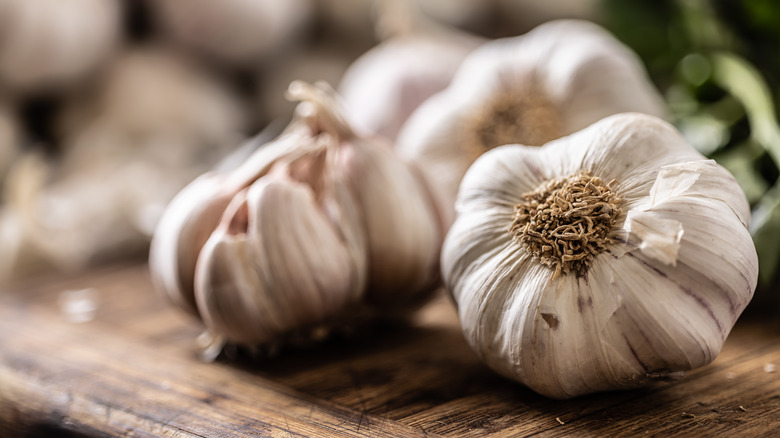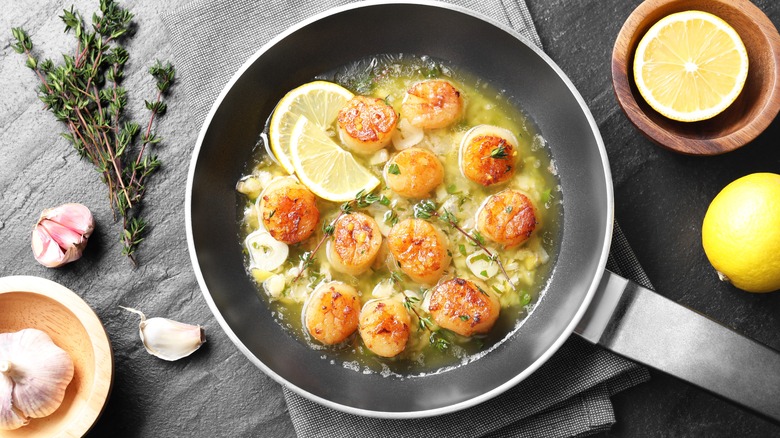The Practical Reason Recipes Never Seem To Use The Right Amount Of Garlic
From sofrito to Thai curry paste, garlic can be an essential building block in many a recipe, creating a medley of flavors working in harmony, just as easily as it can be the featured one in the mix. But why do recipes often require what seems to be too much or too little garlic? The answer is quite simple on the surface, but detailed once you start diving deeper — your mileage may vary depending on several factors. Between variability in taste, size, and age of garlic, two cloves in two different households can yield a very different final product.
Whether garlic is the supporting character or the star depends on the recipe's intention, the volume of garlic used, and whether the garlic is cooked or raw. A roasted garlic mayonnaise can take a whole head without being too strong, while 1 to 2 raw cloves in aioli will have you reaching for breath mints. This can make it difficult to judge if a recipe has the right amount of garlic. Use too little and the dish is bland, use too much and the flavor is overwhelming in a reflux-inducing way.
Consider also when and how garlic is added. The longer garlic cooks, the softer the flavor, meaning the difference between two extra cloves is minor. Lightly cooked or raw garlic will be strong, so these recipes use less and even a small increase is noticeable. However, you can usually taste and adjust as you go for the perfect balance.
How to adjust garlic in a recipe
Similar to salt, garlic will always be subject to personal taste. Since most recipes aim to find a middle ground for wider appeal, there are some key factors that will help you figure out when to ramp up the garlic with abandon and when to adjust with caution. Mincing garlic makes the taste stronger, as does grating garlic. This is less important in long-simmering soups or stews where the flavor will mellow, but a vital clue for how potent garlic will taste in a lightly cooked recipe versus one with sliced garlic. To make a recipe more or less garlicky, you can adjust the quantity of cloves or change how it's cut.
When garlic is raw, the size and age of the cloves is a critical factor. Size is self-explanatory. If your cloves are the size of a pea versus a cherry, adjust up or down, letting two small cloves stand in for one, or having one large clove replace two medium ones. As garlic ages, the flavor intensifies, so before cooking, take a look at your garlic. If it's starting to yellow or pucker, or has a green germ poking out, these are signs of more potent garlic, though it's still fine to use unless it is actually starting to go bad. You do not need to remove the green germ from the garlic, but if you leave it in, there will be more of a punch of flavor, which may be exactly what you want.

